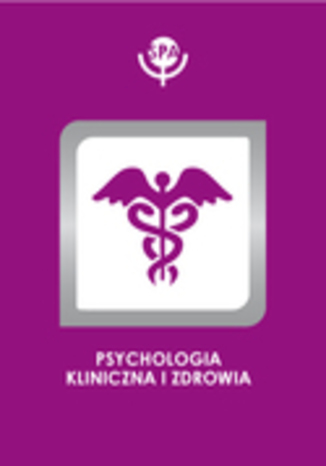Array
(
[id] => 317
[date] => 2019-03-12
[doi] =>
[title] => Niektóre determinanty przekazywania nieoczekiwanej informacji o chorobie zagrażającej życiu
[title_en] => SOME DETERMINANTS OF RELAYING AN UNEXPECTED INFORMATION ON A LIFE –THREATENING DISEASE
[authors] => Teresa Rzepa, Michał Goran Stanišić
[abstract] => The diagnosis of asymptomatic life-threatening disease, is a severe experience for the patient, because of the need to make decisions about treatment, which carries the risk of complications and death. Patients’ decision making process over surgery is rarely based on the same reasons as the qualification, performed by a doctor. Instant patient’s consent for an operation is rather the result of yielding to a very strong emotion than the result of conscious choice. The study involved two groups of patients (total 50), hospitalized for scheduled surgery of: abdominal aorticaneurysm and internal carotid artery stenosis. It was assumed that patients informed suddenly on a life-threatening asymptomatic disease, have an emotional attitude towards disease and make their decision to undergo surgery on the basis of external motives. Patients with carotid artery stenosis are less emotional. In patients with abdominalaortic aneurysm primary source of information about the disease and treatment is the primary physician qualifying for treatment. Patients with internal carotid artery stenosis is looking for alternatives for consultation and verify the information, which leads to differences in the motives behind the decision about surgery. It is more rational then. The obtained results allow us to develop a new scheme of communication of doctor with a patient, taking intoconsideration the different disease entities.
[abstract_en] => The diagnosis of asymptomatic life-threatening disease, is a severe experience for the patient, because of the need to make decisions about treatment, which carries the risk of complications and death. Patients’ decision making process over surgery is rarely based on the same reasons as the qualification, performed by a doctor. Instant patient’s consent for an operation is rather the result of yielding to a very strong emotion than the result of conscious choice. The study involved two groups of patients (total 50), hospitalized for scheduled surgery of: abdominal aorticaneurysm and internal carotid artery stenosis. It was assumed that patients informed suddenly on a life-threatening asymptomatic disease, have an emotional attitude towards disease and make their decision to undergo surgery on the basis of external motives. Patients with carotid artery stenosis are less emotional. In patients with abdominalaortic aneurysm primary source of information about the disease and treatment is the primary physician qualifying for treatment. Patients with internal carotid artery stenosis is looking for alternatives for consultation and verify the information, which leads to differences in the motives behind the decision about surgery. It is more rational then. The obtained results allow us to develop a new scheme of communication of doctor with a patient, taking intoconsideration the different disease entities.
[keywords] => unexpected information, life-threatening disease, risk of death
[keywords_en] => unexpected information, life-threatening disease, risk of death
[file_path] => /files/articles/2011-17-niektre-determinanty-przekazywania-nieoczekiwanej-informacji-o-chorobie-zagraajcej-yciu.pdf
[okladka] => psychologoia_kliniczna_i_zdrowia.jpg
[rocznik] => Rocznik: 2011 Tom: 17 Numer: 2
[strony] => 187-194
)










 Pobierz pełny tekst
Pobierz pełny tekst



